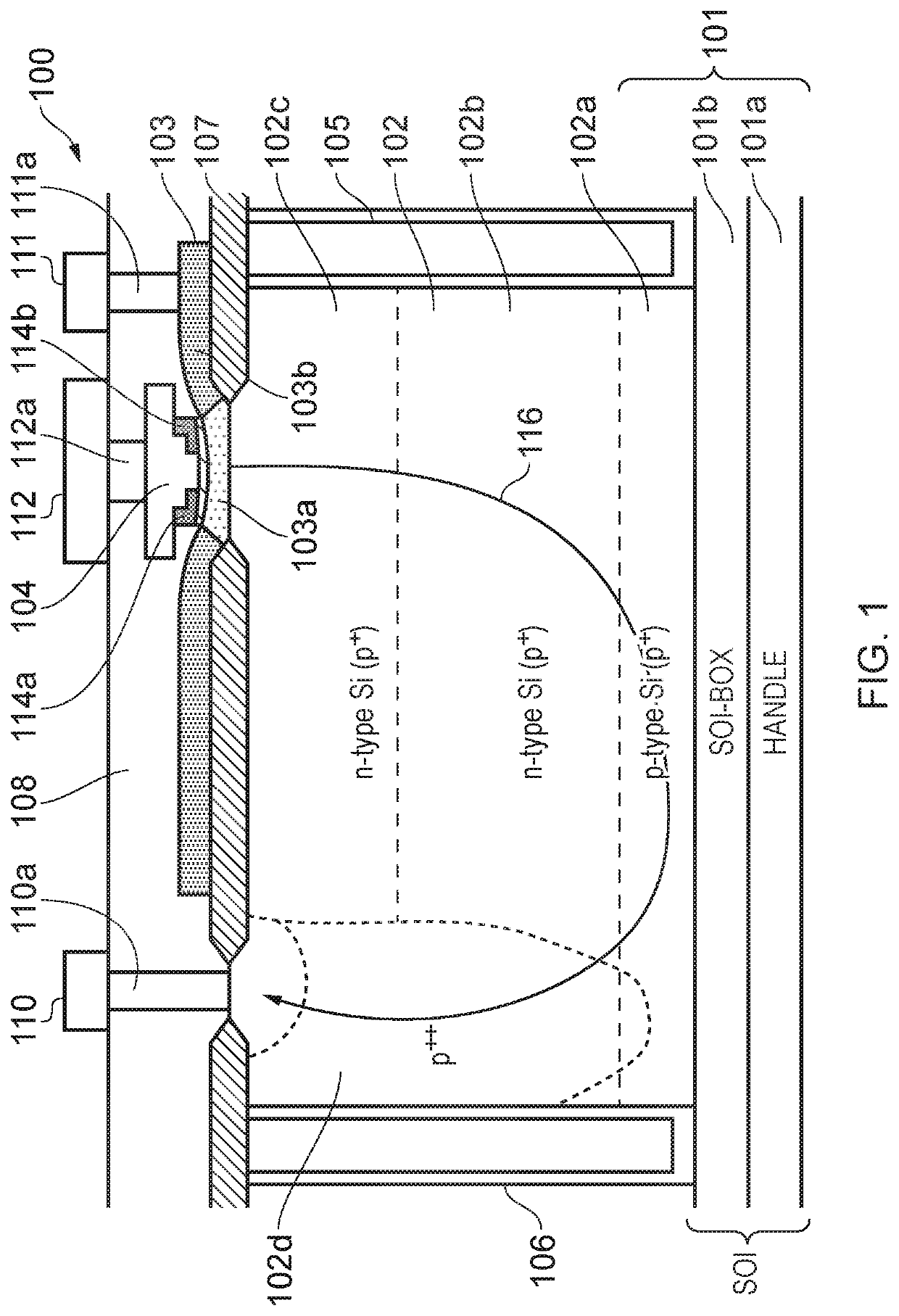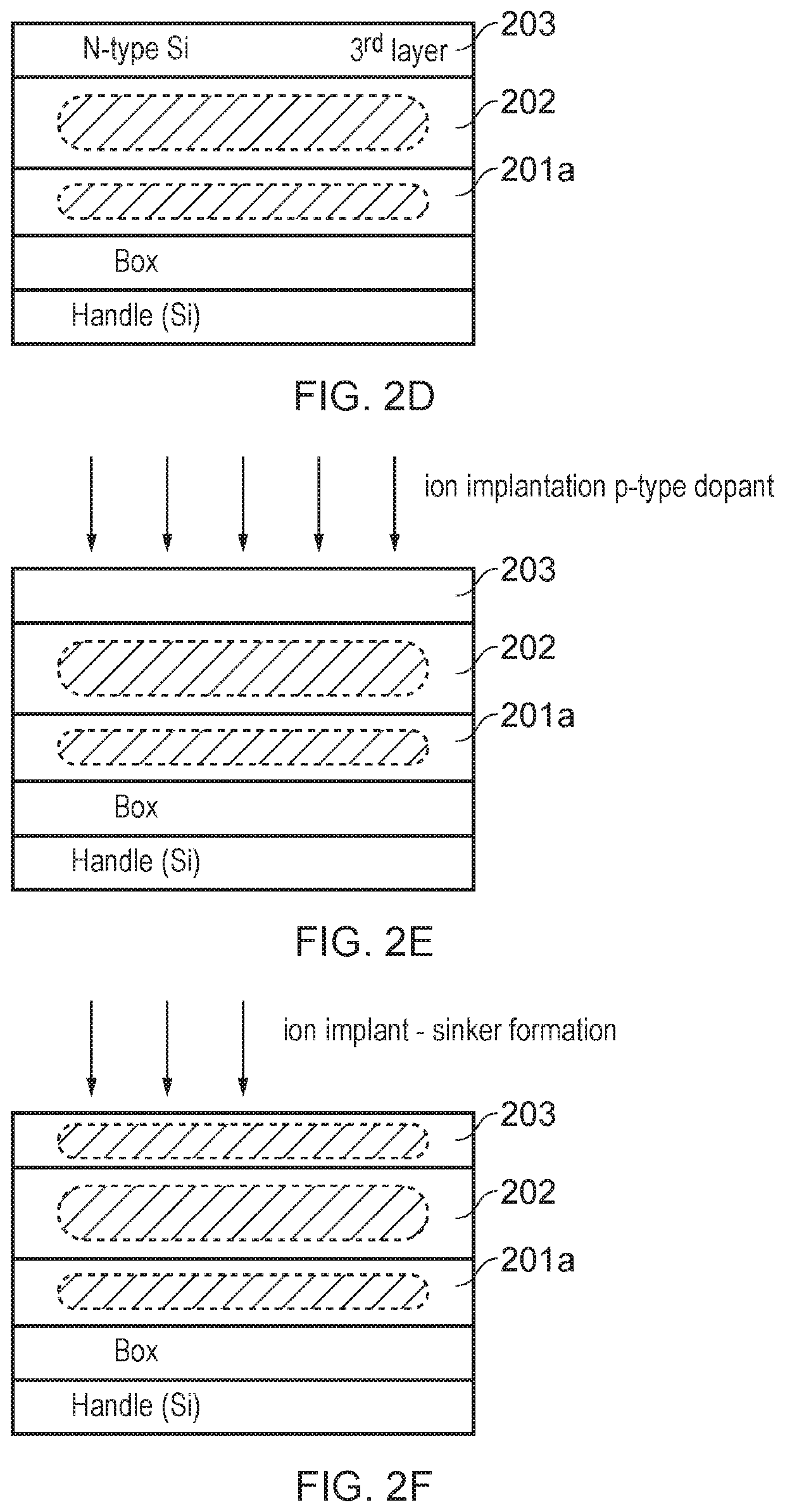Bipolar junction transistor, and a method of forming a charge control structure for a bipolar junction transistor
a bipolar junction transistor and charge control technology, applied in transistors, electrical devices, semiconductor devices, etc., can solve the problems of complex optimization of the performance of bipolar junction transistors and limited application prospects
- Summary
- Abstract
- Description
- Claims
- Application Information
AI Technical Summary
Benefits of technology
Problems solved by technology
Method used
Image
Examples
example 10
[0111 is a bipolar junction transistor according to any of the above Examples 1-9, wherein the transistor is an NPN silicon transistor and a height of the emitter is approximately between 150 nm to 180 nm.
[0112]Example 11 is a bipolar junction transistor according to Example 7 or Example 8 wherein the transistor is a PNP silicon transistor and wherein the distance between the edge of the emitter and the transition between the extrinsic base region and the intrinsic base region is 0.55 μm or less.
example 12
[0113 is a bipolar junction transistor according to any of Examples 1-8 or Example 11, wherein the transistor is a PNP silicon transistor and a height of the emitter is at least 300 nm.
[0114]Example 13 is a bipolar transistor according to any of the above Examples 1-12 further comprising spacer regions, positioned between an edge of the emitter and the intrinsic base, wherein the spacer regions are configured to define a width of a region of the emitter adjacent the intrinsic base, and optionally wherein the spacer-regions are L-shaped, and / or the spacer-regions are formed of an oxide.
[0115]Example 14 is a bipolar transistor according to Example 13, wherein the width of the region of the emitter adjacent the intrinsic base is less than 0.6 μm.
[0116]Example 15 is a bipolar transistor according to any of the above Examples 1-14, wherein the height of the interfacial layer is configured to optimise a gain of the bipolar transistor, and optionally wherein the transistor is an NPN silico...
example 26
[0127 is a bipolar junction transistor according to any of Examples 21-25, wherein each layer has a thickness that is different to that of the other layers.
[0128]Example 27 is a bipolar junction transistor according to any of Examples 21-26, wherein the collector has three individually grown epitaxial layers, including a buried layer, an intermediate layer and a top layer.
[0129]Example 28 is a bipolar junction transistor according to Example 27, wherein the intermediate layer is thicker than the top layer.
[0130]Example 29 is a bipolar junction transistor according to any of Examples 21-28, wherein each layer has a maximum dopant concentration and the maximum dopant concentration for the buried layer is higher than the maximum dopant concentrations of the other layers.
[0131]Example 30 is a bipolar junction transistor according to any of Examples 21, Example 22 when dependent on Examples 1-8, 11-16, Examples 23-29, wherein the transistor is a PNP transistor and the dopant is P-type.
[0...
PUM
| Property | Measurement | Unit |
|---|---|---|
| thickness | aaaaa | aaaaa |
| thickness | aaaaa | aaaaa |
| thickness | aaaaa | aaaaa |
Abstract
Description
Claims
Application Information
 Login to View More
Login to View More - R&D
- Intellectual Property
- Life Sciences
- Materials
- Tech Scout
- Unparalleled Data Quality
- Higher Quality Content
- 60% Fewer Hallucinations
Browse by: Latest US Patents, China's latest patents, Technical Efficacy Thesaurus, Application Domain, Technology Topic, Popular Technical Reports.
© 2025 PatSnap. All rights reserved.Legal|Privacy policy|Modern Slavery Act Transparency Statement|Sitemap|About US| Contact US: help@patsnap.com



